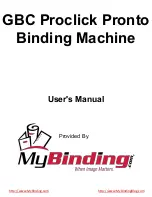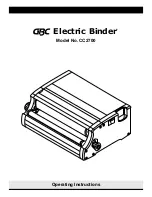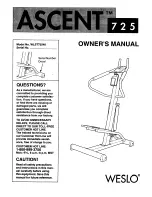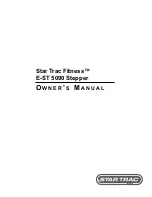
AAASewing.com
105
Cause
1. The needle thread is not threaded properly.
2. The needle thread tension is too tight.
3. The needle is bent or blunt.
4. The needle is incorrectly inserted.
5. The needle thread and the bobbin thread are not set under the
presser foot when start sewing.
6. The threads were not drawn to the rear after sewing.
7. The fabric is moved too fast when stitching free motion quilting.
8. The thread is tangled around the spool.
1. The bobbin thread is not threaded properly in the bobbin holder.
2. Lint has collected in the bobbin holder.
3. The bobbin is damaged and does not turn smoothly.
1. The needle is incorrectly inserted.
2. The needle clamp screw is loose.
3. The fabric is pulled forward when using the open-toe foot.
4. The needle is too ne for the fabr ic being used.
5. An inappropriate presser foot is used.
1. The needle is incorrectly inserted, bent or blunt.
2. The needle and/or threads are not suitable for the work being sewn.
3. A stretch stitch needle is not being used for sewing stretch, very ne
fabrics and synthetics.
4. The needle thread is not threaded properly.
5. A poor quality needle is used.
1. The needle thread tension is too tight.
2. The needle thread is not threaded properly.
3. The needle is too heavy for the fabric being sewn.
4. The stitch length is too long for the fabric.
5. The foot pressure is not adjusted properly.
A stabilizer is not used when sewing very ne fabrics.
1. The feed dog is packed with lint.
2. The stitches are too ne.
3. The feed dog is not raised after ”drop feed” sewing.
1. The needle thread tension is too loose.
2. The needle is too thick or too ne for the f abric.
1. The machine is not plugged in or foot control is not connected.
2. Thread has been caught in the hook race.
3. The presser foot is not lowered.
1. The stitch density is not suitable for the fabric being sewn.
2. The interfacing has not been used for the stretch or synthetic fabric.
3. The buttonhole lever is not lowered.
1. Thread has been caught in the hook race.
2. Lint has built up in the hook race or bobbin holder.
1. The foot pressure is not suitable for fabrics being sewn.
1. Thread is too thick for the auto thread cutting.
2. Threads have been caught in the thread cutter mechanism.
1. Thread tension is not balanced.
Condition
The needle thread
breaks
The bobbin thread
breaks
The needle breaks
Skipped stitches
Seam puckering
The cloth is not
feeding smoothly
Loops on the
seams
The machine does
not work
Buttonhole sewing
is not sewn properly
The machine is
noisy
Layers shift
Auto thread cutting
failed
The needle thread
appears on the
wrong side of the
fabric when the
stitch width value
is larger than “7.0”.
Reference
Page 21
Page 12
Page 17
Page 17
Page 23
Page 32
Page 79
Use the spool holder.
Page 20
Page 101
Change the bobbin.
Page 17
Page 17
Page 79
Page 17
Use the correct foot.
Page 17
Page 17
Use the stretch stitch
needle.
Page 21
Change the needle.
Page 12
Page 21
Page 17
Make stitch shorter.
Page 11
Apply a stabilizer.
Page 101
Make stitch longer.
Page 11
Page 12
Page 17
Page 6
Page 101
Page 10
Pages 58
Apply an interfacing.
Page 54
Page 101
It is not abnormal for a faint humming sound to be heard from the internal motors.
The LCD screen and function key area may become warm after several hours of continuous use.
Page 101
Page 11
Page 7
Page 101
Page 12
Troubleshooting
Janome MC8900 Instruction Manual
Janome Quilting & Sewing Machine
www.aaasewing.com
MC8900 Owners Manual/ User Guide


































